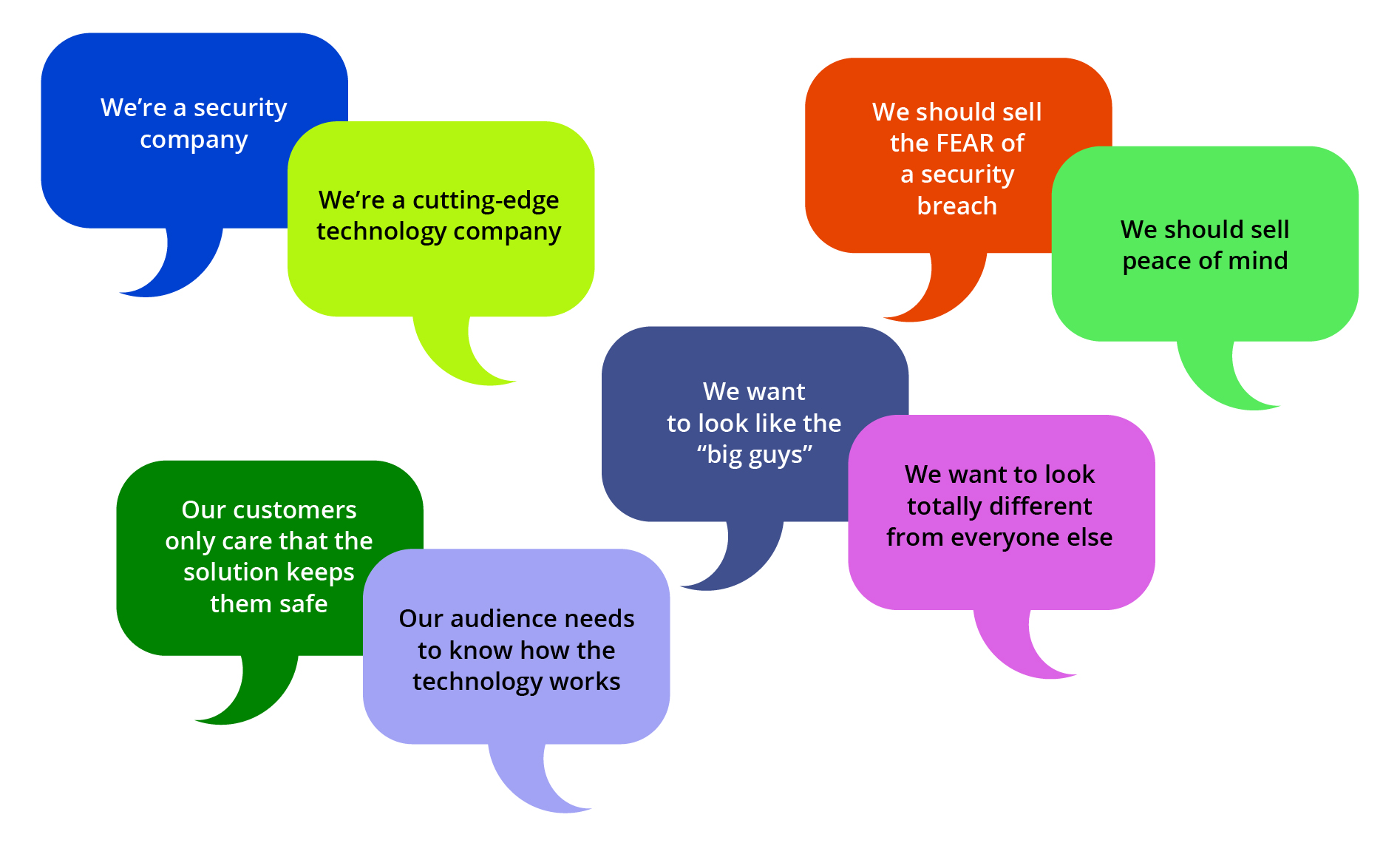Getting a cybersecurity product to market is no small task: it requires developing a solution that can anticipate and protect against increasingly sophisticated, ever-changing threats that exist in what is currently a wild-west cyber landscape. At the same time, potential customers are demanding solutions that offer absolute protection while also meeting their business and compliance requirements. When it comes time to create the brand and launch the product, the challenges continue. Here are five:
- Determining the right positioning — a cybersecurity company develops cutting-edge technology, but it’s also a security company. So, as it jockeys for leadership positioning in the market, deciding where it should be on the spectrum — from sizzling technology innovator on one end to rock-solid, reliable, and proven threat protection provider on the other — is a critical first step since this serves as the foundation upon which everything is built.
- Developing the right messaging and tone — messaging (what is said) is of course important, but the tone (how it’s said) is just as important since it can influence market perception and motivate prospects to act. For example, when it comes to dealing with cyber threats, the messaging and tone can be negative (what bad things can happen if a company doesn’t act or makes the wrong decision), or optimistic (a company can worry less about threats and focus more on business).
- It’s often necessary to communicate to multiple audiences, each with different needs and technical understanding.
- The product is complex making it harder to clearly and concisely communicate in both words and graphics how the product works or why it’s a better solution, particularly to audiences with different levels of understanding.
- The product usually isn’t visual, eliminating one thing companies can use to differentiate from competitors and forcing companies to look for other ways to create visual interest. (Note: companies sometimes resort to stock images, which can be overused and do nothing to promote a distinct brand.)
 Shaping the Brand
Shaping the Brand
Positioning, messaging, and tone are not the only elements that make up a brand, but they help significantly in forming a complete picture of what the brand will be. Together they provide clarity and consistency — not only to people outside the company (customers, prospects, analysts, media, partners, etc.), but internally as well.
My guess is that most companies would say they feel comfortable with their positioning and messaging, having worked on it at least informally. I don’t have data to determine the accuracy of this, but anecdotally, I can say that in the process of learning about companies over the years, I have seen countless examples of a company having marketing, sales, and corporate presentations that are inconsistent, confusing and even contradictory. Positioning, messaging, and tone need to be finalized, and the results disseminated throughout the company, through a formal process (or as part of a larger brand development process).
Making a Complex Story Understandable
We’ve mentioned that cybersecurity solutions are complex, making it hard to convey how they work, particularly to audiences with varying needs and understanding. It’s common for anyone deeply immersed in the technology to inadvertently slip into using terminology familiar to them but foreign to others. It can also be hard to know how deeply to discuss certain topics or even the best way to do it. For example: How much should we discuss the technical aspects versus cost implications? Should a diagram be technical or conceptual?
This is why a design firm with experience working in the cybersecurity market can be of considerable value. Not only do they understand the technology and terminology, but they understand what and how to communicate to a specific audience so it’s relevant, understandable and engaging.
